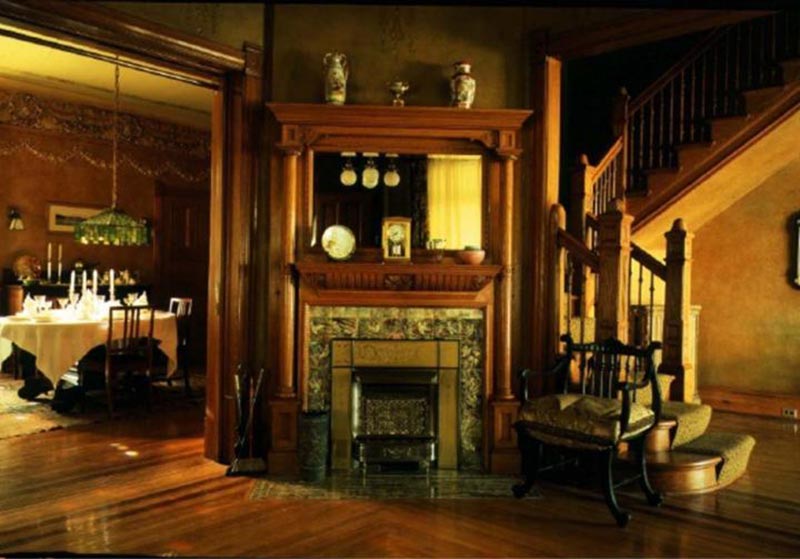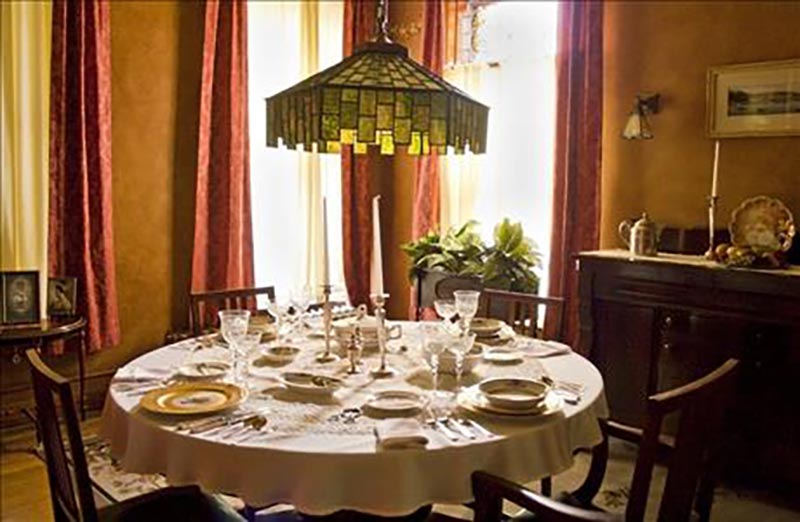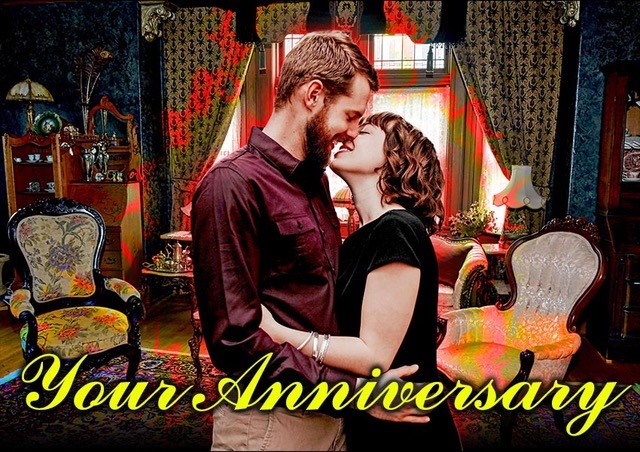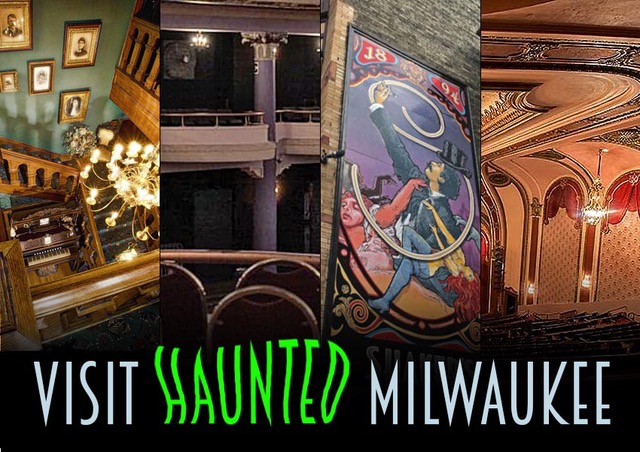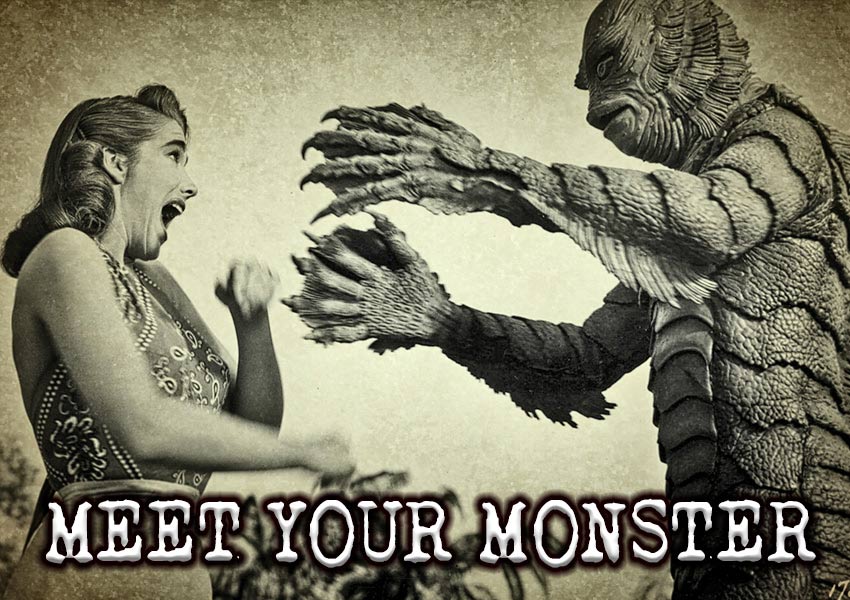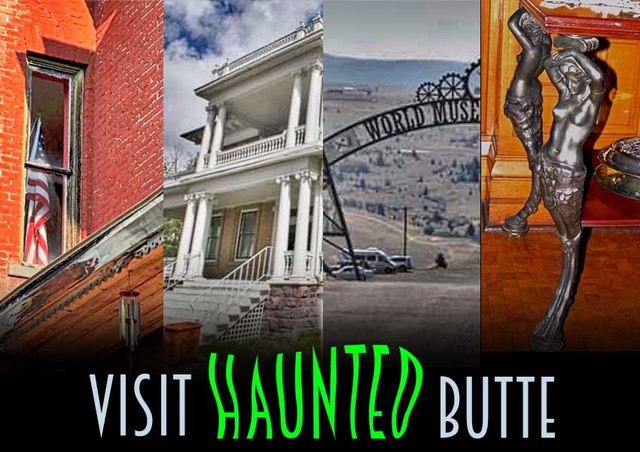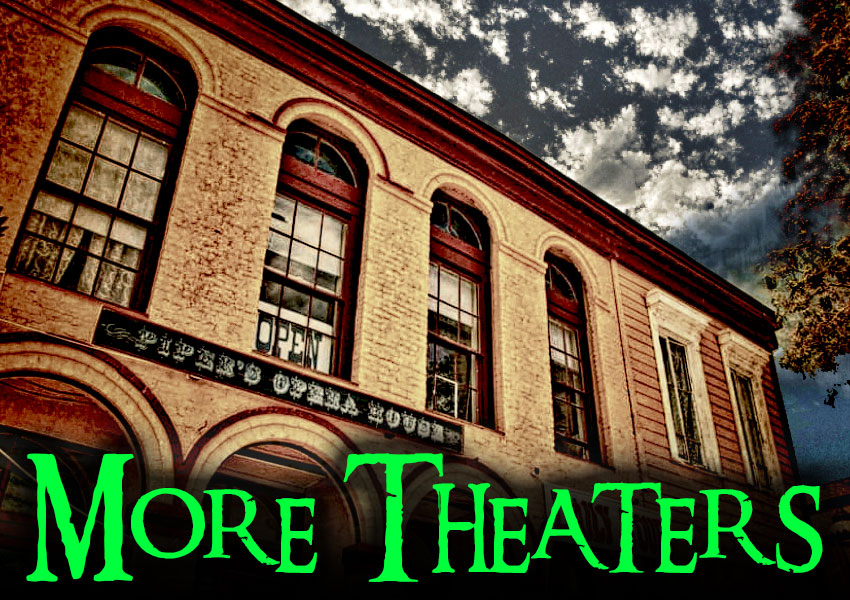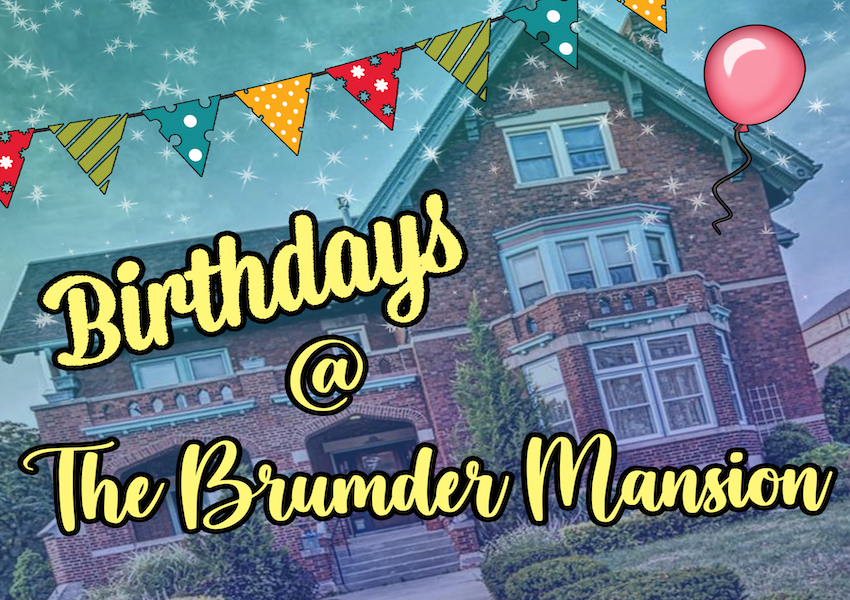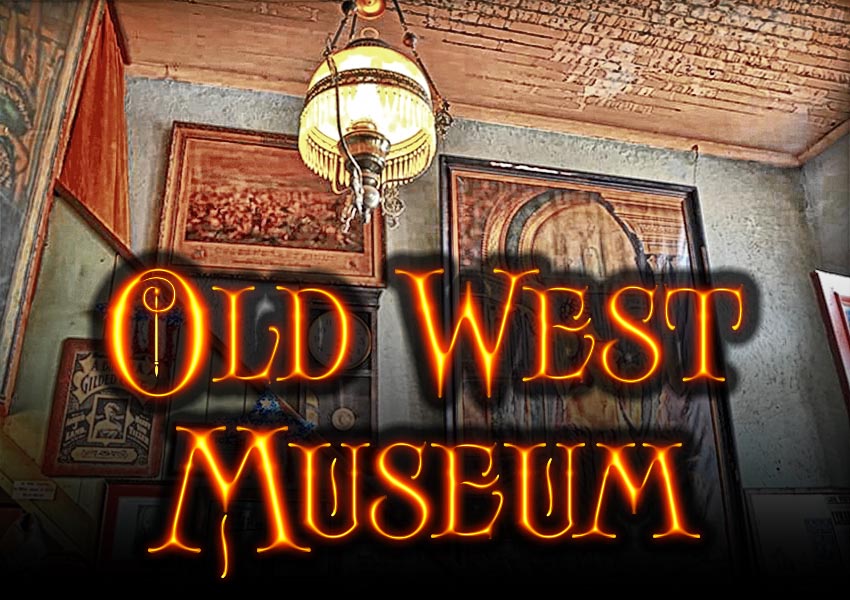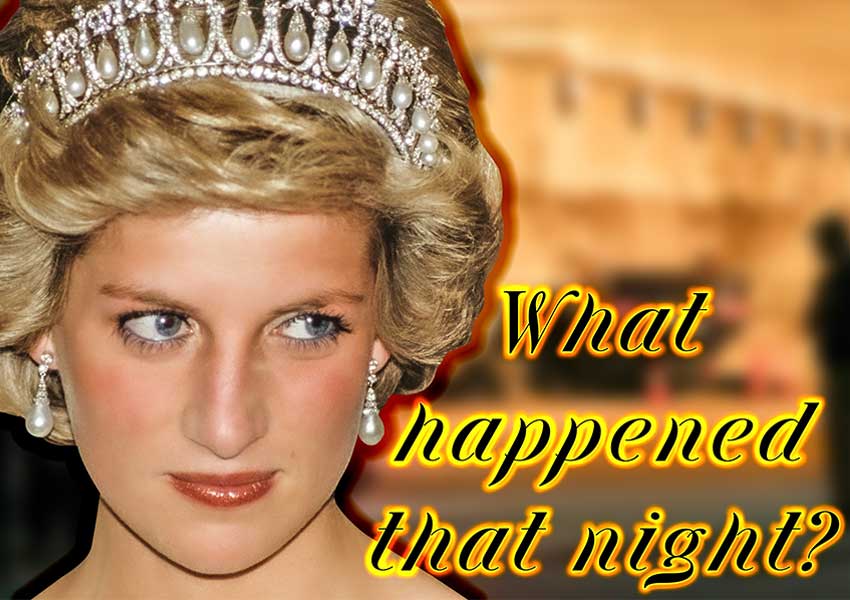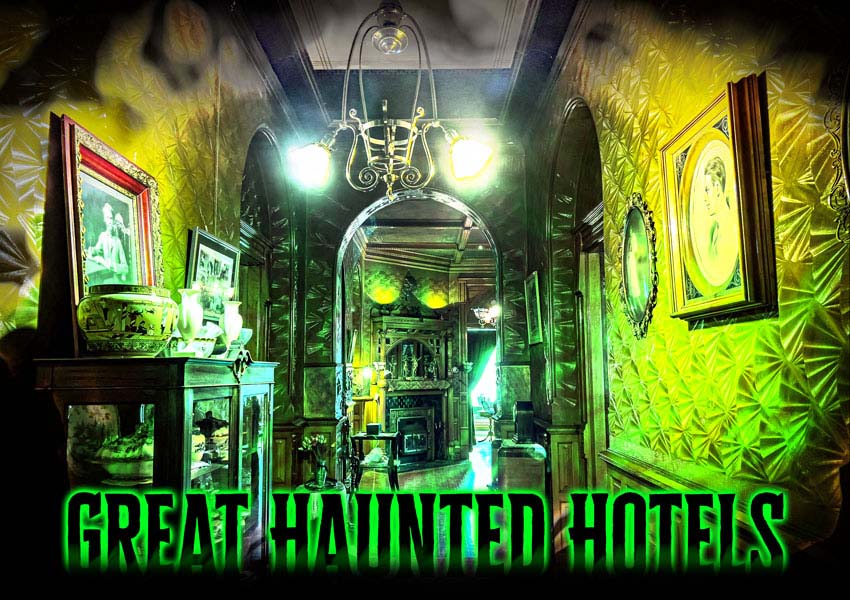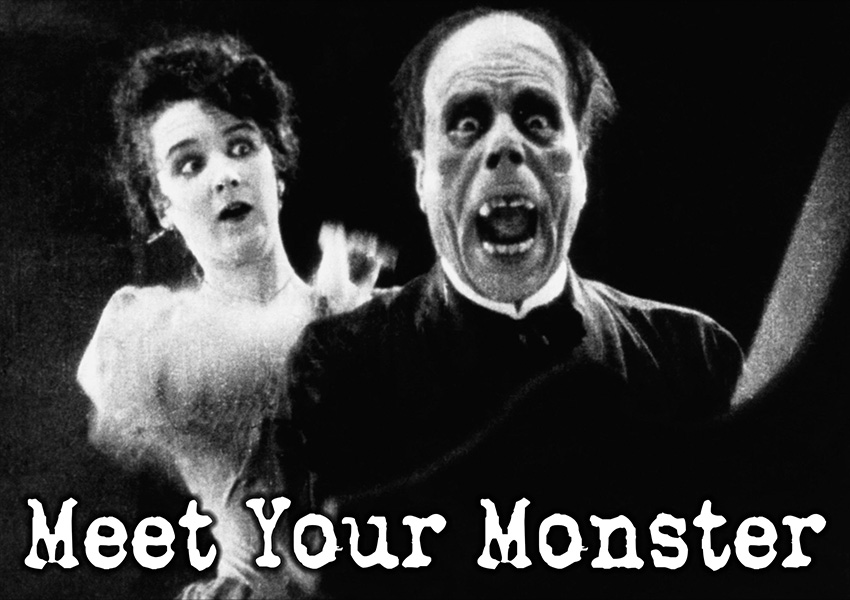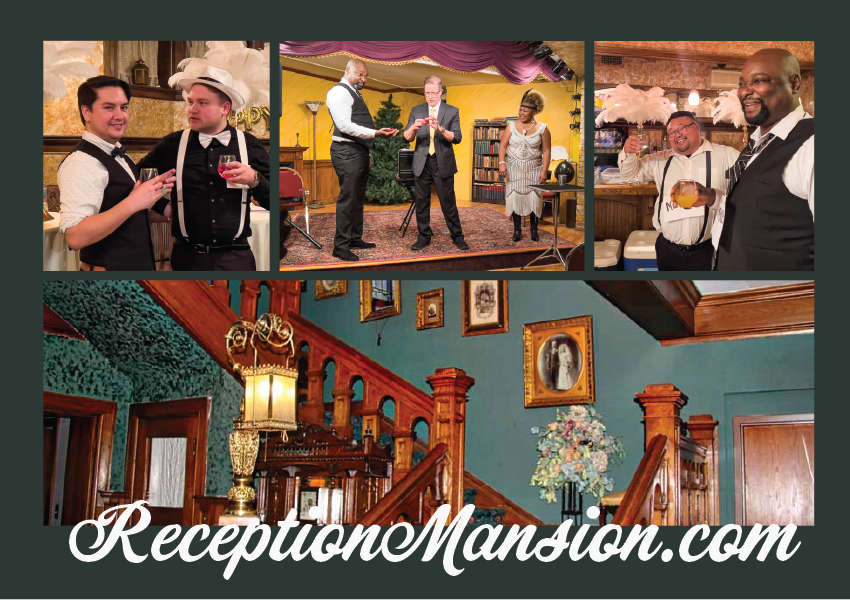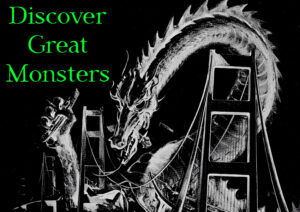Deadwood South Dakota
Adams House
This owner loved this grand, elegant mansion.
He spends his afterlife in his forever home.
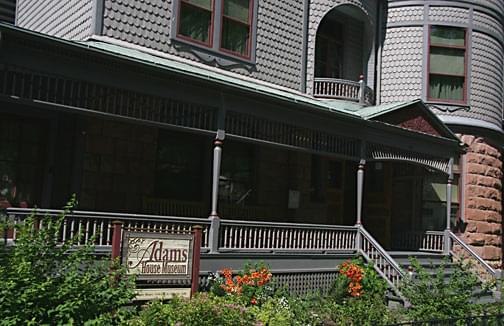
DESCRIPTION
This 1893, two story, grand Queen Anne Victorian Adams Mansion was built by merchant/business entrepreneur, Harris Franklin for his family to live; in style, with all the modern conveniences! It cost between $8,000 and $10,000 to create a mansion which was described as “the beau ideal of a modern American house in any urban center.” They used a stock design by the great Simon Eisendrath, and hired a local general contractor, Tuplin and Johnson, to oversee the mansion’s construction, which began in 1892.
Queen Anne style mansions are described by architectural historian, John C. Poppelier, as being “a contrast of materials”, and so was the Franklin’s new home. The first floor was made of quarried red sandstone, brought by train from Buffalo Gap, South Dakota. The rest of the home was covered in metallic shingles, complete with a corner turret and dome on the third floor /attic, used as a smoking room for visiting gentlemen guests. The interior of the home had 10 rooms. First floor was finished in natural oak and the balance in pine. This mansion had central heat, indoor plumbing, hot and cold running water, electrical lighting, wall-to-wall carpeting, and telephone service.
Harris, Anne and their son Nathan moved into their new mansion in August, 1893. In 1896, a Chicago design firm of Mitchell and Halbach added more delicate touches to the mansion. Lovely, hand-painted, glazed and stenciled canvas-on-plaster wall coverings, stained glass, and decorative painting added even more beauty to this elegant home.
The entry hall was given decorative painting of the Empire style, the sitting room was finished in the Flemish Renaissance and the dining room was decoratively painted in the German Baronial. The woodwork in the parlor was painted white enamel and gilt. Beautifully painted clusters of flowers done in watercolors in the corners, which also extended into the center of the ceiling. The room was finished with a beautifully done, stucco cornice of naturally colored flowers and leaves. The stairs off of the second floor sitting room were also added, creating a direct route to the smoking room in the dome.
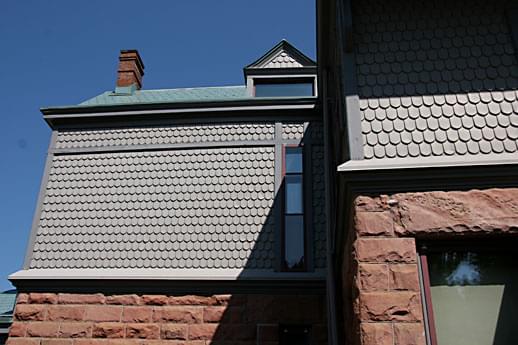 Nathan and his wife, Ada bought the mansion from his parents for a dollar, and in 1904 planned some more changes in flooring, lighting and paint colors to add their personal touches to this mansion. Wall-to-wall carpeting was considered old-fashioned. Nathan and Ada added a parquet flooring in the parlor, ornamental flooring in the sitting room, birds-eye maple flooring was installed in all the rooms on the second floor, except the maid’s floors. Linoleum flooring was installed in the kitchen. The wall coverings were updated with new colors and added decorations, and changing the color of the walls in the parlor from blue to pink. They widened the doorway from the sitting room to the hall way, and improved the decor, using the same decorating scheme for both areas. New lighting fixtures were added and changed, to make the rooms more modern and in style. It is also thought that at this time, the southern end of the wrap around porch was enclosed and made into a sun room.
Nathan and his wife, Ada bought the mansion from his parents for a dollar, and in 1904 planned some more changes in flooring, lighting and paint colors to add their personal touches to this mansion. Wall-to-wall carpeting was considered old-fashioned. Nathan and Ada added a parquet flooring in the parlor, ornamental flooring in the sitting room, birds-eye maple flooring was installed in all the rooms on the second floor, except the maid’s floors. Linoleum flooring was installed in the kitchen. The wall coverings were updated with new colors and added decorations, and changing the color of the walls in the parlor from blue to pink. They widened the doorway from the sitting room to the hall way, and improved the decor, using the same decorating scheme for both areas. New lighting fixtures were added and changed, to make the rooms more modern and in style. It is also thought that at this time, the southern end of the wrap around porch was enclosed and made into a sun room.
W.E. and Alice Adams were the next owners of this grand mansion, in 1920. They made changes of convenience and modernization. He changed the fireplaces to gas, improved the heating system, added modern lighting on the first floor, moving the older fixtures to the second floor. In the dining room, the walls, swag, and picture molding were painted green.
The year 1925 brought 3 deaths to the Adams clan. Alice came down with terminal cancer, and went to visit their younger daughter in Pasadena, California, who was 7 months pregnant. Unfortunately, Alice suddenly died at her daughter’s home, which triggered a fatal premature labor experience for both the daughter and her baby girl, who lived for only a day.
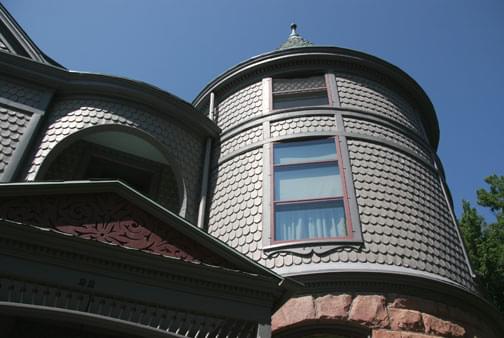 W.E. Adams found himself the last survivor of his family. Their eldest daughter had died a few years earlier from a deadly disease. In memory of Alice and his two daughters, W.E. Adams donated $35,000 dollars to establish Deadwood’s historical museum, now called The Adams Museum.
W.E. Adams found himself the last survivor of his family. Their eldest daughter had died a few years earlier from a deadly disease. In memory of Alice and his two daughters, W.E. Adams donated $35,000 dollars to establish Deadwood’s historical museum, now called The Adams Museum.
After Alice died of cancer, W. E. Adams married a 29 year old woman that he fell in love with on the train ride from Pasadena, Calif. to Deadwood, South Dakota.
The newlyweds, W.E. and Mary, lived in the mansion together. Mary purchased new curtains and rods for the whole mansion, and put up new wallpaper in the bedrooms, covering over the original floral designs. Mary turned the sitting room into her room, adding french doors between her new room and the master bedroom. The W.E. Adams Room got its own private bathroom, when a door was made through a closet, leading into what was a guest room, but became the new bathroom.
After W.E. Adams died, Mary closed up the mansion, leaving all items in the home, which is where they stayed for 50 years. She would return every year for a short visit, to maintain her residency in South Dakota, but never again really lived here. The mansion was not kept in good shape, and by 1987, it was in need of major repairs, including a new roof, and fixing water-damaged walls and floors. Mary was in poor health, so she sold the mansion and all its contents to Bruce and Rebecca Crosswaits, with the idea of keeping the mansion and all its contents together.
 From 1988-1992, Crosswaits ran a bed and breakfast to bring in some money to carefully renovate the grand old house, documenting any changes made. Guests slept on the Adams’ bed sheets, and ate off the Adams family china. In 1992, the Crosswaits faced some difficulties, but wanted to ensure that the needed restorations on their beloved mansion would continue.
From 1988-1992, Crosswaits ran a bed and breakfast to bring in some money to carefully renovate the grand old house, documenting any changes made. Guests slept on the Adams’ bed sheets, and ate off the Adams family china. In 1992, the Crosswaits faced some difficulties, but wanted to ensure that the needed restorations on their beloved mansion would continue.
The Deadwood City Council had been receiving a boat load of money for historical restoration projects from the legalized gambling from Deadwood’s casinos, since “gaming” in Deadwood became legal in 1989. The City Council of Deadwood agreed to buy this historic old house. It was run as a bed and breakfast until 1995, until it was forced to close its doors because the heating system failed.
The Adams’ House was silent again, but not for long. Because the Crosswaits had stabilized the home, making it sound once again, the mansion qualified to become a historic house museum. Because of the careful restoration work already done by the Crosswaits, who kept much of the original materials used in its history, as well as keeping a lot of the Adams’ belongings which came with the mansion, The Adams House Museum was a treasure worth the expense to restore.
An extensive team of restoration experts got to work on the mansion. Phase 1, Phase 2, and Phase 3 restoration plans were begun in 1998. The budget for such a grand endeavor was set at 1.5 million dollars. In 2000, The Adams House Museum opened to the public, restored to its former glory.
To see all the wonderful restoration work done, and many fine belongings of the original owners, come and take the tour of this fabulous home. Tom and I really enjoyed the tour, and also bought the house’s complete The story of its history and what was exactly done to restore it in the fine little paperback, “The Adams House Revealed”, which is sold in the gift shop.
HISTORY OF MANIFESTATIONS
W.E. Adams loved this grand, elegant mansion which he bought in 1920 at the age of 66, from his old political rival, Nathan Franklin.
This very elegant home was a reward for his lifetime of achievement, which he was able to share with his wife, Alice, for five years before she died. This is also the home where he made a new marital life with his second wife, Mary, for 7 years.
MANIFESTATIONS
W.E. Adams died of a stroke in the mansion.
Spirit of W.E. Adams
It is said that Mary heard his spirit walking around the second floor.
Out of respect for her dead husband, Mary closed up the house, leaving everything as it was during their life together. Mary came back once a year to visit her mother, and entertain old friends in their home, but always stayed at The Franklin Hotel. So, most of the time, The Adams House was empty for 50 years, but still had all of the original furnishings!
It got around town that this house was haunted by W.E. Adams, and no one dared to enter, or participate in any kind of vandalism.
Welcoming New Staffers
We talked to some of the staff at The Adams House Museum about their paranormal experiences.
This entity likes to make his presence known in front of new staffers, in subtle or more dynamic ways, perhaps his playful way of saying hello, and welcome! (Gilcrease House)
On her first day of the job, one staffer was surprised to smell the strong aroma of cigar smoke as she walked through the second floor.
Another very affable, knowledgeable, newly hired male tour guide was taking a small group through the mansion. When he got to the second floor bedrooms, a rocking chair in Mary’s Room, began to strongly rock all by itself. The visitors looked in amazement as did the tour guide, who finally broke the spell by continuing on to the next room, in his professional manner, not letting this manifestation fluster him and disrupt his tour presentation.
STILL HAUNTED?
Yes indeed, according to the eye witnesses we talked with after our tour of The Adams House Museum.
Also, the staff at the Bullock Hotel and The Adams Museum told us of the town legend about the entity of W.E. Adams, haunting the mansion.
LOCATION
22 Van Buren Avenue
Deadwood, South Dakota 57732.
605-578-3724
The Adams House Museum can be found in a residential section, just west of Main Street.
Take Main Street, turn right on Lee Street, that runs right into Sherman Street. Turn right onto Sherman, which runs into Pine. Continue on Pine, pass Center Street. Turn left onto Cemetery, and then in about a block, turn right onto Van Buren. The Adams House Museum is on the left, near the corner of Lincoln and Van Buren.
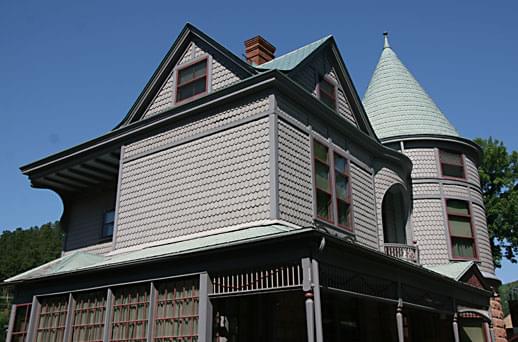
SOURCES INCLUDE
- Pictures © Tom Carr
- Eye witnesses, and the staff at the Adams Museum and The Bullock Hotel
- THE ADAMS HOUSE REVEALED: The Restoration of an Historic Home
by Mary A. Kopco – Mailway Printers, 2006
Our Haunted Paranormal Stories are Written by Julie Carr
Our Photos are copyrighted by Tom Carr
Visit the memorable… Milwaukee Haunted Hotel
